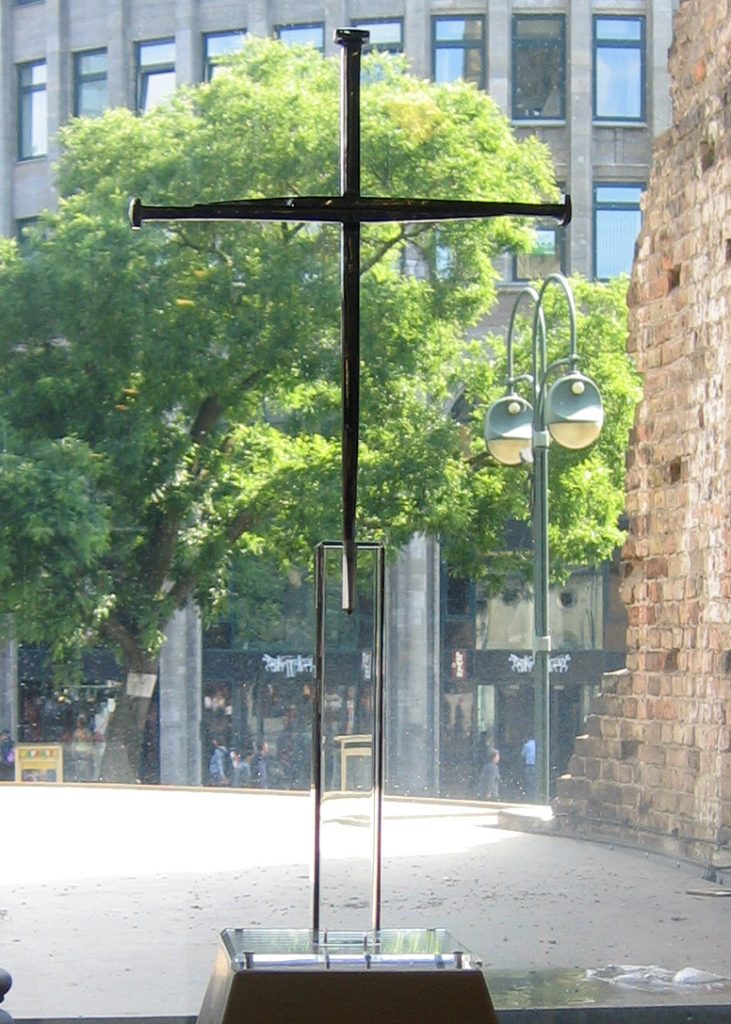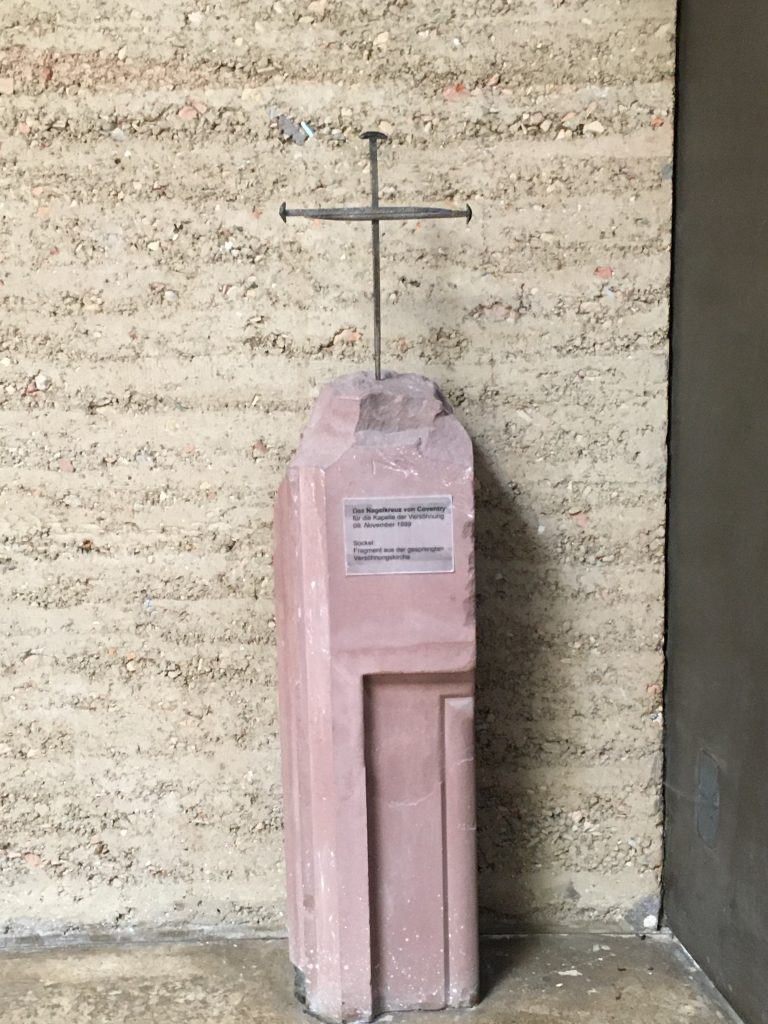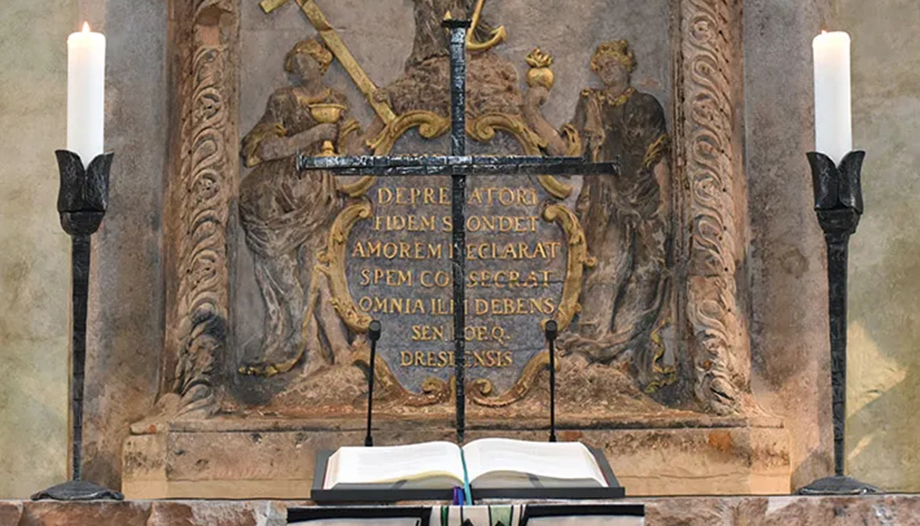On the night of November 14-15, 1940, the German air force (Luftwaffe) bombed the English city of Coventry, in the context of the so-called "Battle of Britain" of World War II. In Coventry, a city located 153 kilometers northwest of London, were based large companies that supplied the British aviation (Royal Air Force, RAF), which Hitler was trying to neutralize, as a precondition for the intended occupation.
That night, 449 bombing planes dropped hundreds of thousands of bombs; 550 people lost their lives and several thousand were wounded. The city and with it also the Anglican cathedral were reduced to ruins. The cathedral has remained in the ruined state in which it was left as a symbol of the terrible consequences of the bombing.
But from Coventry Cathedral also emerged a symbol, not of destruction but of reconciliation. During the removal work, large iron nails were found in the rubble, which originally held the heavy beams of the nave vault since the 14th century. Three of these nails were used to form a cross.
This gave rise to the symbol of the "Cross-of-Nails" in Coventry, which still stands on the ruined altar and was to be the original symbol for a movement of reconciliation. In his Christmas 1940 radio address, the then Dean Richard Howard - from the ruins of the cathedral - called on the English not to seek revenge, but to work for reconciliation. Shortly afterwards he had the words FATHER FORGIVE inscribed on the wall of the ruined choir.
Dresden, Berlin and Hamburg
From Coventry, "nail crosses" were initially sent to German cities destroyed in the war, in this case by British and American aircraft. Of particular importance were Dresden, Berlin and Hamburg.
In Dresden, the British-American air raids of February 13-15, 1945 left the city completely destroyed, including the famous Frauenkirche, which would not be rebuilt until 2005.

In Berlin, it was the memorial church - so called because Kaiser Wilhelm II had it built in memory of his grandfather Wilhelm I - that was left in ruins after the air raids of World War II. After the war, new modern buildings were combined with the ruins of one of the towers.
The church of St. Nicholas in Hamburg was also left in ruins as a memorial. In all three of the above-mentioned churches, nail crosses can be found today.
The movement spread and in 1974 the "International Community of the Cross of Nails" was founded, which is spread over five continents, from European countries such as Bosnia-Herzegovina to Australia, the United States and Canada, Jordan and Sudan. Its main objective is to "heal the wounds of history".
– Supernatural prayer of reconciliation
The international community of the cross of nails is spiritually united by three elements: firstly, the so-called "cross of nails". prayer of reconciliationThe first edition of the Cross of Nails, formulated in 1958, has since been prayed on Fridays at 12 o'clock in the ruins of the old cathedral in Coventry and in numerous "cross of nails centers" around the world:
"All have sinned and fall short of the glory of God (Rom 3:23).
The hatred that divides nation from nation, race from race, class from class,
Father, forgive me.
The greedy desire of people and nations to possess what is not theirs,
Father, forgive me.
The ambition that exploits the labor of men and women and devastates the Earth,
Father, forgive me.
Our envy of the well-being and happiness of others,
Father, forgive me.
Our indifference to the plight of the homeless and displaced,
Father, forgive me.
Greed that dishonors the bodies of men, women and children,
Father, forgive me.
The pride that leads us to trust only in ourselves, and not in God,
Father, forgive me.
But be ye kind one to another, tenderhearted, forgiving one another, even as God forgave you in Christ (Eph. 4:32)."
Joint service for reconciliation and Saint Benedict
The second element is "joint service for reconciliation in areas of the world in conflict" and thirdly, the so-called "rule of life", which is rooted in the rule of St. Benedict of Nursia: "Prayer and work (ora et labora), piety and life are understood as a unity".

The "Community of the Cross of Nails in Germany" ("Nagelkreuzgemeinschaft in Deutschland e.V.") was established in 1991 as an ecumenical community, with currently 78 centers, mostly evangelical churches, although there are also some Catholic ones such as St. Barbara in Munich, as well as other institutions dedicated to historical memory.
In its program it says: "The cross of nails challenges us Germans again and again to face our past and also the tense present in a spirit of truth and reconciliation. In the cities where we live, we want to live the 'spirit of Coventry'."
The latest institutions to receive the Coventry "cross of nails" in Germany were the Evangelical Church of St. Michael in Jena, which became the center with the symbolic number 77 of the German community; on March 19, Coventry Dean John Witcombe handed it over. More recently, on May 29, John Witcombe presented a nail cross to the Evangelical Cathedral of Brunswick (Braunschweig).








